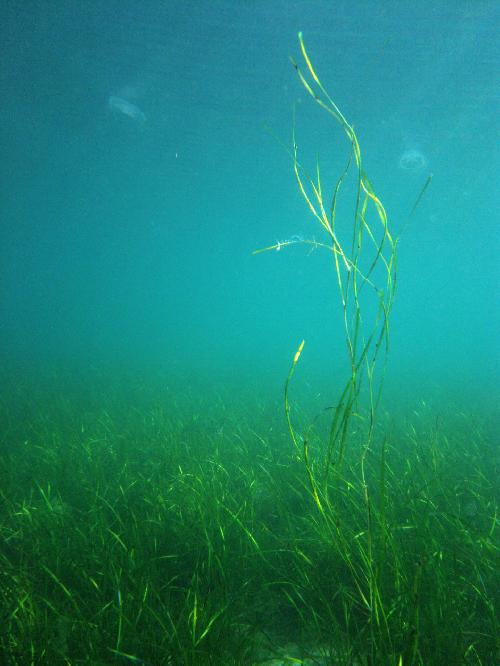The genome of eelgrass (Zostera marina) has now been unveiled. It turns out that the plant, once land-living but now only found in the marine environment, has lost the genes required to survive out of the water. Scientists from the University of Gothenburg participated in the research study, the results of which are published in the scientific journal Nature.
Eelgrass belongs to a group of flowering plants that have adapted to a life in water. As such, it is a suitable candidate for studies of adaptation and evolution.
'Since flowering plants have emerged and developed on land, eelgrass can be expected to share many genetic features with many land plants. Studying differences between them can tell us how eelgrass has adapted to a marine environment,' says Mats Töpel, researcher at the Department of Marine Sciences, University of Gothenburg, who participated in the sequencing of the eelgrass genome.
 Eelgrass belongs to a group of flowering plants that have adapted to a life in water. As such, it is a suitable candidate for studies of adaptation and evolution. Credit: Frithjof Moy
Eelgrass belongs to a group of flowering plants that have adapted to a life in water. As such, it is a suitable candidate for studies of adaptation and evolution. Credit: Frithjof Moy
Töpel is part of an international research collaboration involving 35 research teams. As a result of their efforts, the eelgrass genome has now been published in Nature.
A life on land no longer possible
One interesting discovery made by the scientists is that eelgrass has lost not only the special cells that flowering plants need to be able to 'breathe' (meaning to absorb carbon dioxide and release oxygen) but also the genes required to form these cells.
'This is a good example of how evolution extends beyond mere accumulation of useful traits; organisms can also benefit from losing certain genes and characteristics,' says Töpel.
Eelgrass - a key species in trouble
Eelgrass belongs to a group of plants generally referred to as seagrass and forms gigantic submarine meadows along European, North American and Asian shores. The plant has adapted to many different environments, from the bitter Arctic cold to the warm waters further south.
In all of these environments, eelgrass serves an important function in the ecosystem by binding sediments and acting as a nursery for young fish and other animals. It also influences our own environment by binding large amounts of nutrients and carbon dioxide.
'Lately, the eelgrass meadows have disappeared in many places, and a lot of research is underway to figure out how these ecosystems work and what we can do to protect them,' says Töpel.
Further studies remain
The genome of an organism contains huge amounts of information.
'So far we have only scratched the surface. A vast number of bioinformatic analyses of eelgrass remain to be done. And the increasing availability of genomes of other organisms enables us to make new comparisons,' says Töpel.
source: University of Gothenburg